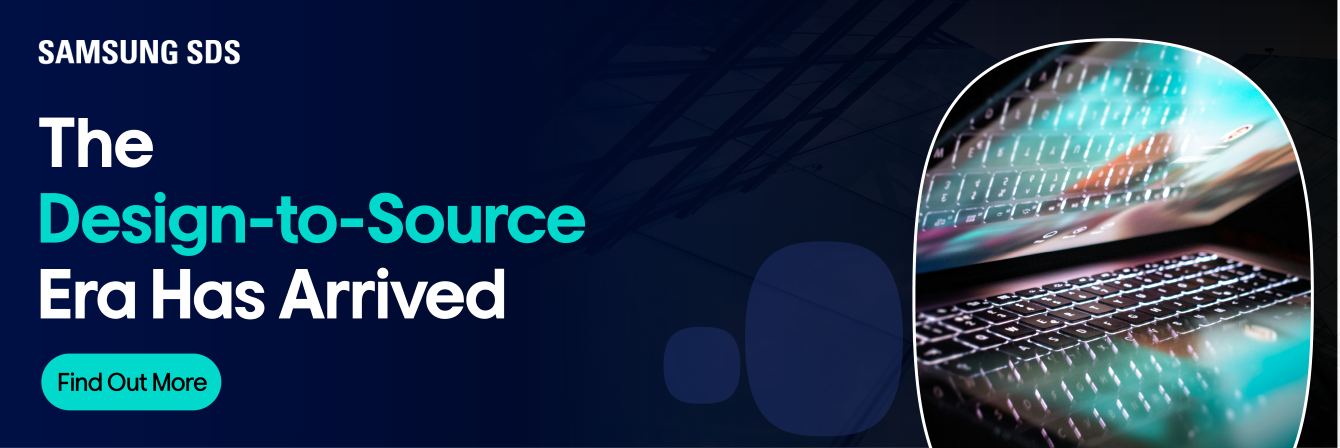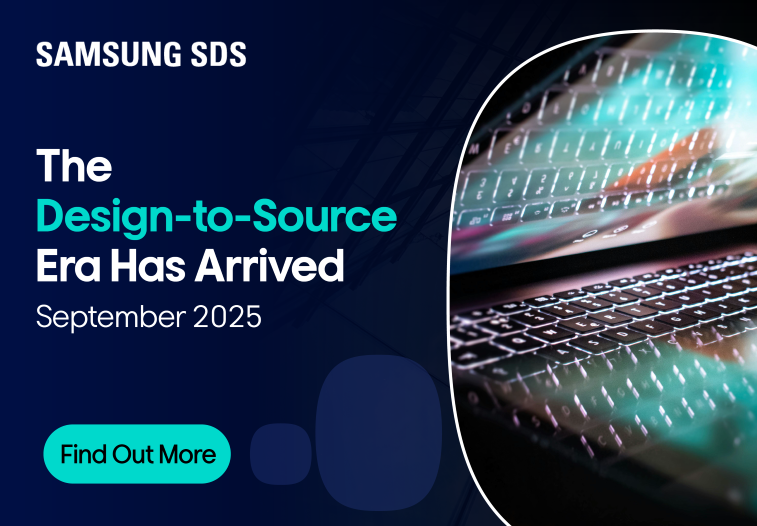
For modern manufacturers, supply chain costs are rising from every direction: raw materials, logistics, compliance, labor, and financing. For companies managing complex bills of materials (BOMs), especially in high-precision and engineered-to-order sectors, the margin for error is shrinking while the cost of inefficiency is growing.
At the same time, innovation cycles are accelerating. Customer demands shift quickly, product designs evolve rapidly, and expectations around delivery speed and customization rise continuously. This is placing unprecedented pressure on direct procurement and supply chain teams to balance agility with cost control.
The solution lies in rethinking the traditional linear model and embracing a smarter, more connected approach that starts not at the point of purchase, but at the very beginning: design.
Welcome to the era of design-to-source —powered by data, driven by collaboration, and increasingly enabled by artificial intelligence.
The Cost of Disconnection
Historically, product design and procurement teams have operated in silos. Engineers build what they envision and procurement teams are expected to source it, often with limited visibility into part availability, cost implications, supplier capacity, geopolitical risk, or potential market disruptions.
This disconnection leads to:
- Over-engineered components that drive up cost
- Missed opportunities to standardize or consolidate suppliers
- Reactive sourcing under pressure
- Expensive last-minute changes or supply chain delays
Issues like these get amplified when the unexpected happens, as seen with recent tariff changes. More and more teams are seeing the need to collaborate sooner to bring tariff awareness into the early design and sourcing process before parts are locked in. When many products contain thousands of components sourced from all over the world, this collaboration enables teams to think strategically about viable alternative options that will keep a project on budget and on time.
In today’s rising-cost environment, inefficiencies stemming from disconnection are no longer acceptable. More importantly, they’re no longer necessary.
Design-to-Source Workflows Bridge the Gap
Design-to-source represents a transformational shift: integrating sourcing intelligence into the product design process so that engineering and procurement teams make decisions collaboratively, informed by real-time supply data.
When engineering can see the full picture—pricing trends, lead times, supplier performance, geographic risk, ESG compliance—at the point of initial product design, it empowers smarter part selection, faster time to market, and measurable cost savings. Likewise, when procurement is looped into the design phase, it can guide decisions that avoid single-source bottlenecks or recommend pre-qualified, lower-cost alternatives.
This is where AI is becoming a game changer.
How AI Makes It Possible
Until recently, the vision of a fully integrated design-to-source workflow was difficult to achieve at scale. The data existed, but it was scattered across ERPs, spreadsheets, emails, and siloed systems. Human decision making was limited by time, scope, and visibility.
Now, AI is closing the gap by turning fragmented data into predictive insights and enabling smarter, faster decisions across the entire product lifecycle. AI technology in design-to-source procurement workflows enables:
1. Predictive Cost Modeling
AI can forecast the cost impact of design choices in real time, drawing from historical data, market pricing, and supplier benchmarks, helping teams stay within budget from day one.
2. Alternative Part Recommendations
AI can use machine learning to analyze BOMs and suggest functionally equivalent components based on availability, lead time, or cost, improving resilience without sacrificing quality.
3. Supplier Intelligence & Risk Scoring
AI aggregates external and internal data to assess supplier risk profiles, financial health, geopolitical exposure, and ESG alignment, helping procurement teams mitigate risk proactively.
4. Automated RFQs & Negotiation Support
AI can generate and distribute RFQs, recommend optimal price points, and even analyze contract terms, accelerating the sourcing process without compromising compliance.
5. Scenario Planning at Scale
AI can simulate and model hundreds of scenarios simultaneously, informing better planning by testing what-if situations like tariff changes, raw material shortages, or supplier shutdowns.
The Real-World Value of Design-to-Source
Design-to-source capabilities aren’t just ideas. They’re tangible, essential tools for manufacturers who must balance cost, complexity, and speed in volatile markets. Consider a real-world use case:
A top-10 global automotive manufacturer wanted to enhance the cost competitiveness of its vehicle trim components, including wipers, mirrors, visors, consoles, and more. The difficulty was that sourcing these items required the validation of spreadsheet files containing 200-900 line items per component with little consistency from line to line.
By applying AI algorithms to organize historical quote databases and calculate should-cost analysis, the automaker standardized quotes, sped up sourcing cycles (quote analysis alone went from taking one week to just hours), and reduced purchasing costs for interior components by 5-10%. This saved millions while improving stability in procurement and supply chain planning functions.
There are many more examples of AI-powered technology enabling the design-to-source process in the real world. Whether it’s analyzing BOMs that contain thousands of line items, flagging components at risk of near-future unavailability during the design phase, or identifying hundreds of components eligible for substitution quickly, companies are avoiding launch delays and meeting their financial targets more easily than ever before. These aren’t just efficiency wins—they’re strategic, competitive advantages.
Designing Smarter, Cost-Aware Supply Chains
When every cost is under scrutiny and every delay is magnified, the old model of procurement as a late-stage, reactive function no longer serves manufacturers. The future belongs to those who integrate design and sourcing from the start by leveraging AI to drive transparency, speed, and strategic alignment.
Lastly, it’s essential to understand that AI doesn’t replace human expertise; it augments it. Engineers still design, and procurement still negotiates, but AI empowers both functions with insights at the speed and scale that today’s manufacturing environment demands. To realize the full benefits of design-to-source, companies must ultimately foster a new culture where data flows freely, collaboration is rewarded, and product lifecycle decisions are made with total cost and supply resilience in mind.
The most competitive supply chains aren’t just lean—they’re intelligent by design. That’s the key to empowering manufacturers to thrive in complexity, not just survive it. After all, the smartest way to cut costs isn’t after the fact. It’s to build smarter from the very beginning.
Learn how design-to-source workflows can form an integral part of your direct procurement blueprint in this white paper from the experts at Spend Matters.
A version of this article was recently published in Automation Alley’s Integr8 Playbook: Global Trends & Supply Chain: Planning for a Shifting World.

George Stasiw is a recognized thought leader in manufacturing, supply chain, procurement, and technology innovation. With a foundation built at IBM and advanced AI studies at MIT, he is now a prominent voice for design-to-source solutions at Samsung SDS. George thrives when brainstorming with organizations looking to enhance procurement processes, optimize BOM management, and connect their design and sourcing teams. Start a conversation with him at g.stasiw@samsung.com.
